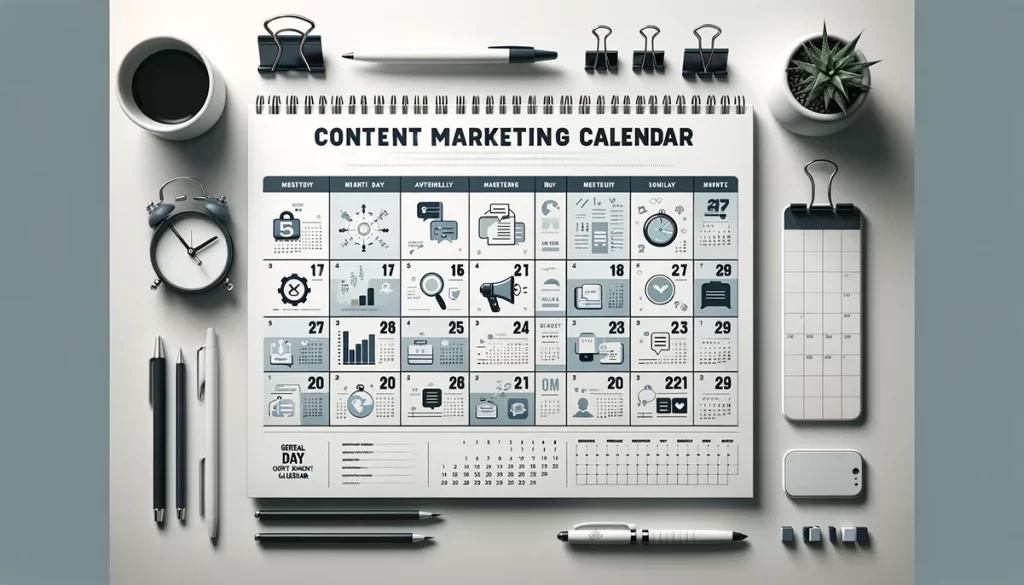
The Ultimate Guide to Content Marketing in 2024
In the ever-evolving landscape of digital marketing, content remains king. As we progress through the year 2024, the importance of content marketing becomes increasingly evident and valuable. Understanding and leveraging content marketing strategies is paramount for businesses establishing a robust online presence. In this comprehensive guide, we’ll delve into the intricacies of content marketing, its importance, statistics validating its efficacy, how it works, types of content to employ, how to embark on your content marketing journey, and why investing in it is crucial for the future of your business.
SHARE
Table of Contents
What Is Content Marketing?
Content marketing involves creating and distributing valuable, relevant, consistent content to attract and engage a clearly defined audience. Unlike traditional advertising, content marketing aims to provide value to the audience rather than directly promoting a product or service. It encompasses various forms of content, including articles, videos, infographics, podcasts, and social media posts, tailored to resonate with the target audience.
Why Is Content Marketing Important?
Content marketing serves as the backbone of digital marketing strategies for several reasons:
Builds Trust and Credibility: By consistently delivering valuable content, businesses can establish themselves as authorities within their respective industries, fostering trust and credibility among their audience.
Increases Brand Awareness: Compelling content can significantly enhance brand visibility and recognition, allowing businesses to reach a broader audience and stay top-of-mind.
Drives Organic Traffic: High-quality content optimized for search engines can improve organic search rankings, driving more traffic to your website over time.
Facilitates Lead Generation and Conversion: Informative and engaging content can guide potential customers through the buyer’s journey, ultimately increasing conversions and sales.
Fosters Customer Loyalty and Retention: Continuously providing value to existing customers through relevant content can cultivate long-term relationships and encourage repeat business.
Content Marketing Statistics?
- According to a study by the Content Marketing Institute, 91% of B2B marketers use content marketing to reach their target audience.
- HubSpot reports that businesses prioritizing blogging are 13 times more likely to achieve a positive ROI on their marketing efforts.
- Demand Metric found that content marketing costs 62% less than traditional marketing and generates about three times as many leads.
How Content Marketing Works?
Content marketing operates on delivering the right content to the right audience at the right time. It involves strategic planning, creation, distribution, and analysis of content to achieve specific marketing objectives. Critical steps in the content marketing process include:
Audience Research: Understanding your target audience’s demographics, preferences, pain points, and behaviour is essential for creating relevant and engaging content.
Content Creation: Develop high-quality content tailored to your target audience’s needs and interests. This may include blog posts, videos, social media posts, e-books, and whitepapers.
Content Distribution: To distribute your content and maximize its reach, utilize various channels such as your website, social media platforms, email newsletters, and guest posting.
Engagement and Interaction: Encourage audience engagement by responding to comments, initiating discussions, and soliciting feedback to foster a sense of community around your brand.
Performance Tracking and Optimization: Monitor key metrics such as website traffic, engagement rates, conversion rates, and ROI to evaluate the effectiveness of your content marketing efforts. Use the insights gathered to refine your strategies and optimize future content.
What are the types of content to use in content marketing?
Content marketing encompasses a diverse range of content types, each serving a unique purpose and catering to different audience preferences:
- Blog Posts: Informative articles addressing industry trends, tips, guides, and thought leadership pieces.
- Videos: Engaging visual content, including tutorials, product demonstrations, interviews, and behind-the-scenes footage.
- Infographics: Visual representations of data or information, ideal for conveying complex concepts in a digestible format.
- Podcasts: Audio content featuring discussions, interviews, or storytelling relevant to your industry or niche.
- Social Media Posts: Bite-sized content optimized for various social media platforms to spark engagement and interaction.
- E-books and Whitepapers: In-depth resources offering valuable insights, research findings, or comprehensive guides on specific topics.
- Case Studies: Real-life examples showcasing how your product or service solved a problem or achieved desired customer results.
- Webinars and Live Streams: Interactive sessions providing educational content, Q&A sessions, or product demonstrations in real-time.
How to Start Using Content Marketing?
Embarking on a successful content marketing journey requires careful planning and execution. Here’s a step-by-step guide to get started:
- Set Clear Goals: Determine your objectives, whether it’s increasing brand awareness, driving website traffic, generating leads, or boosting sales.
- Know Your Audience: Conduct thorough research to understand your target audience’s demographics, interests, pain points, and preferred content formats.
- Develop a Content Strategy: Create a content calendar outlining topics, formats, publishing frequency, and distribution channels aligned with your goals and audience preferences.
- Create Compelling Content: Produce high-quality content that provides value, educates, entertains, or solves problems for your audience.
- Optimize for SEO: To improve organic visibility, incorporate relevant keywords, optimize meta tags, and ensure your content is easily discoverable by search engines.
- Promote and Distribute: Share your content across various channels, including your website, social media, email newsletters, and relevant online communities.
- Engage with Your Audience: Foster two-way communication by responding to comments, soliciting feedback, and actively participating in discussions.
- Measure and Analyze: Track key performance metrics to evaluate the effectiveness of your content marketing efforts and make data-driven decisions for optimization.
Invest in Your Future with Content Marketing
In today’s digital age, content marketing is essential for businesses to thrive in a competitive industry. Investing in content marketing drives short-term results and lays the foundation for long-term success and sustainability. Whether you’re a startup, small business, or enterprise, embracing content marketing as a core component of your marketing strategy can yield significant returns on investment and propel your business toward growth and prosperity.
SHARE
